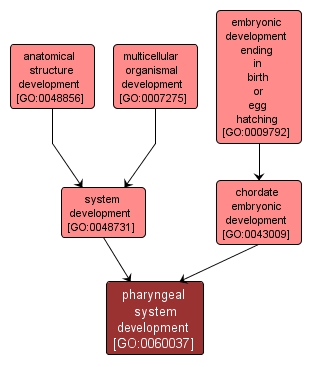| Desc: |
The process whose specific outcome is the progression of the pharyngeal system over time, from its formation to the mature structure. The pharyngeal system is a transient embryonic complex that is specific to vertebrates. It comprises the pharyngeal arches, bulges of tissues of mesoderm and neural crest derivation through which pass nerves and pharyngeal arch arteries. The arches are separated internally by pharyngeal pouches, evaginations of foregut endoderm, and externally by pharyngeal clefts, invaginations of surface ectoderm. The development of the system ends when the stucture it contributes to are forming: the thymus, thyroid, parathyroids, maxilla, mandible, aortic arch, cardiac outflow tract, external and middle ear. |














